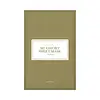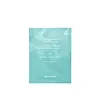What's inside
What's inside
 Key Ingredients
Key Ingredients

 Benefits
Benefits

 Ingredients Side-by-side
Ingredients Side-by-side

Artemisia Princeps Extract 93.31%
Skin ConditioningButylene Glycol
Humectant1,2-Hexanediol
Skin ConditioningWater
Skin ConditioningDipropylene Glycol
HumectantGlycerin
HumectantHydroxyacetophenone
AntioxidantCarbomer
Emulsion StabilisingArginine
MaskingDipotassium Glycyrrhizate
HumectantHydrolyzed Hyaluronic Acid
HumectantPvm/Ma Copolymer
Emulsion StabilisingCaramel
Cosmetic ColorantJuniperus Mexicana Oil
MaskingVetiveria Zizanoides Root Oil
MaskingElettaria Cardamomum Seed Oil
MaskingAbies Sibirica Oil
MaskingDextrin
AbsorbentArtemisia Princeps Extract 93.31%, Butylene Glycol, 1,2-Hexanediol, Water, Dipropylene Glycol, Glycerin, Hydroxyacetophenone, Carbomer, Arginine, Dipotassium Glycyrrhizate, Hydrolyzed Hyaluronic Acid, Pvm/Ma Copolymer, Caramel, Juniperus Mexicana Oil, Vetiveria Zizanoides Root Oil, Elettaria Cardamomum Seed Oil, Abies Sibirica Oil, Dextrin
Water
Skin ConditioningMethylpropanediol
SolventGlycerin
Humectant1,2-Hexanediol
Skin ConditioningPanthenol
Skin ConditioningHydroxyacetophenone
AntioxidantDiethoxyethyl Succinate
SolventAcrylates/C10-30 Alkyl Acrylate Crosspolymer
Emulsion StabilisingTromethamine
BufferingCentella Asiatica Extract
CleansingTrehalose
HumectantAllantoin
Skin ConditioningCentella Asiatica Root Extract
Skin ConditioningCentella Asiatica Leaf Extract
Skin ConditioningXanthan Gum
EmulsifyingDisodium EDTA
Butylene Glycol
HumectantSodium Hyaluronate
HumectantPotassium Hyaluronate
Skin ConditioningHydroxypropyltrimonium Hyaluronate
Hydrolyzed Sodium Hyaluronate
Skin ConditioningHydrolyzed Hyaluronic Acid
HumectantHyaluronic Acid
HumectantPentylene Glycol
Skin ConditioningSodium Hyaluronate Crosspolymer
HumectantMadecassoside
AntioxidantMadecassic Acid
Skin ConditioningAsiaticoside
AntioxidantAsiatic Acid
Skin ConditioningSodium Acetylated Hyaluronate
HumectantWater, Methylpropanediol, Glycerin, 1,2-Hexanediol, Panthenol, Hydroxyacetophenone, Diethoxyethyl Succinate, Acrylates/C10-30 Alkyl Acrylate Crosspolymer, Tromethamine, Centella Asiatica Extract, Trehalose, Allantoin, Centella Asiatica Root Extract, Centella Asiatica Leaf Extract, Xanthan Gum, Disodium EDTA, Butylene Glycol, Sodium Hyaluronate, Potassium Hyaluronate, Hydroxypropyltrimonium Hyaluronate, Hydrolyzed Sodium Hyaluronate, Hydrolyzed Hyaluronic Acid, Hyaluronic Acid, Pentylene Glycol, Sodium Hyaluronate Crosspolymer, Madecassoside, Madecassic Acid, Asiaticoside, Asiatic Acid, Sodium Acetylated Hyaluronate
 Reviews
Reviews

Ingredients Explained
These ingredients are found in both products.
Ingredients higher up in an ingredient list are typically present in a larger amount.
1,2-Hexanediol is a synthetic liquid and another multi-functional powerhouse.
It is a:
- Humectant, drawing moisture into the skin
- Emollient, helping to soften skin
- Solvent, dispersing and stabilizing formulas
- Preservative booster, enhancing the antimicrobial activity of other preservatives
Butylene Glycol (or BG) is used within cosmetic products for a few different reasons:
Overall, Butylene Glycol is a safe and well-rounded ingredient that works well with other ingredients.
Though this ingredient works well with most skin types, some people with sensitive skin may experience a reaction such as allergic rashes, closed comedones, or itchiness.
Learn more about Butylene GlycolGlycerin is already naturally found in your skin. It helps moisturize and protect your skin.
A study from 2016 found glycerin to be more effective as a humectant than AHAs and hyaluronic acid.
As a humectant, it helps the skin stay hydrated by pulling moisture to your skin. The low molecular weight of glycerin allows it to pull moisture into the deeper layers of your skin.
Hydrated skin improves your skin barrier; Your skin barrier helps protect against irritants and bacteria.
Glycerin has also been found to have antimicrobial and antiviral properties. Due to these properties, glycerin is often used in wound and burn treatments.
In cosmetics, glycerin is usually derived from plants such as soybean or palm. However, it can also be sourced from animals, such as tallow or animal fat.
This ingredient is organic, colorless, odorless, and non-toxic.
Glycerin is the name for this ingredient in American English. British English uses Glycerol/Glycerine.
Learn more about GlycerinHydrolyzed Hyaluronic Acid is a form of hyaluronic acid. It is created by the hydrolysis of hyaluronic acid with a high molecular weight. Once created, Hydrolyzed Hyaluronic Acid has a low molecular weight.
Low molecular weight HA has been shown to hydrate and increase elasticity of the skin. Increasing elasticity is also associated with reduction of wrinkle depth.
One study found topical low molecular weight hyaluronic acid may be considered for the treatment of rosacea in the adult population. However, we always recommend speaking with a professional about your skin concerns.
Hyaluronic acids are a humectant. This means they draw moisture from the air. Hyaluronic acids help moisturize, soothe, and protect the skin.
Read more about other common forms of hyaluronic acid:
Learn more about Hydrolyzed Hyaluronic AcidHydroxyacetophenone is antioxidant with skin conditioning and soothing properties. It also boosts the efficiency of preservatives.
This ingredient is not irritating or sensitizing.
Water. It's the most common cosmetic ingredient of all. You'll usually see it at the top of ingredient lists, meaning that it makes up the largest part of the product.
So why is it so popular? Water most often acts as a solvent - this means that it helps dissolve other ingredients into the formulation.
You'll also recognize water as that liquid we all need to stay alive. If you see this, drink a glass of water. Stay hydrated!
Learn more about Water